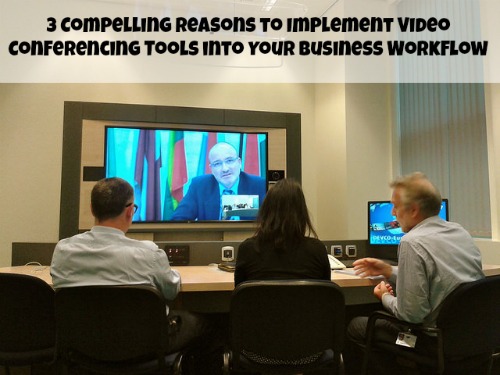
Video conferencing has been around for decades, but it’s not until recently that the benefits of a proper premium video conferencing service could be felt and used throughout small, medium and large enterprises alike. Gone are the days where cumbersome video equipment and dozens of ports and cables were needed to allow proper video calls and conferences to be held. Gone are the days where the need for a dedicated conference room was, well, a need.
Nowadays, all you need is any form of computer – from your own workstation’s office tower, to the smartphone in your pocket. With the right top-of-the-line business video conferencing software like BlueJeans, you won’t just be able to perform video calls with middling image quality and barely any features – instead, you’ll be able to launch calls including several hundred members, with high quality screen sharing, cloud-based file sharing, the latest in encryption-based cyber security, and half a dozen other enterprise solutions.
While all that is fine and dandy, the ultimate question is this: why should you incorporate video conferencing into your business’ day-to-day workflow? And subsequently – how should you do it? That’s what we’ll be exploring today.
Supercharge Your Company Meetings
The first benefit to video conferencing technology at the scale and level it has achieved today is actually a two-birds-one-stone scenario. Conferencing tech will eliminate the wasted time spent in countless useless meetings, while giving you the tools and framework to create highly efficient, cohesive and “supercharged” meetings. Now you may be wondering: what exactly does that mean, though?
It all starts with the numbers. Company employees have reported performing a number of unrelated tasks while meetings are on-going – from reading emails, to daydreaming, and even falling asleep as per Atlassian. Clearly, something’s wrong. Video conferencing can help fix it.
But the keyword here is “help” – there are still a few steps you have to take outside of technological implementations before you can really call your next meeting a success. Meetings typically go wrong because of the same reason: they have no actual purpose. People get together, there’s some talking, a few announcements, and presto, you have a waste of time. To run an effective meeting, you need to make sure of several things.
- Choose a succinct, single goal. Before you begin a meeting, figure out what single-sentence question you want answered. Do you have an announcement to make regarding client feedback for a certain project? If so, focus on turning the meeting into a brainstorming session and decision making process for how to proceed. The term of importance here is decision making – you don’t want your meeting to be incomplete.
- Set a schedule, and be strict with it. The most challenging part of a meeting is keeping it from getting too long. To do that, you need to set a timer and follow it strictly. Unless renewed through new stimuli, the human mind typically shuts off and tunes out after about 45 minutes of sitting in a meeting. The sweet spot is within 25 minutes. Keep you meetings to roughly half an hour.
- Give everyone a chance to contribute. After you’ve talked your piece, allow others to jump in and explain what they think is the best course of action.
- However, discourage ramblings. But if someone decides to take up several minutes for their input, cut them short and remind them of the time constraints.
- Finally, recap. Use the last five minutes in the meeting to go over what has been decided and/or accomplished.
Video conferencing, however, can take your meetings to the next level. Say goodbye to meeting rooms, which risk taking your employees out of their mental working zone. Say goodbye to cumbersome video installations when talking with departments overseas. Say goodbye to the logistics of giving everyone a voice in a large meeting, where a video conference gives everyone equal space and volume.
Make Customer Follow Ups More Personal
In the world of leads and potential loyal customers, one underutilized business practice is customer follow up. If someone availed of your product or service, then make sure to give them some form of communication some time afterwards to freshen up the relationship. As per Strategize Your Success, following up on a client can make them feel appreciated.
Invite them to a large scale video conference between customers for a Q&A session or a poll on product opinions, or simply invite them to talk to you about the product or service and offer some simple suggestions.
Revolutionize Your Customer Service
A good business is lost without the ability to properly help its customers. Not only should you be able to address a customer’s question or plea in a timely fashion – you should be able to do so while proving that you care about the customer’s dilemma or situation. And there’s no better way to do so than by starting a video call with an actual human being, rather than a simple call center redirect or virtual text-based help desk.
